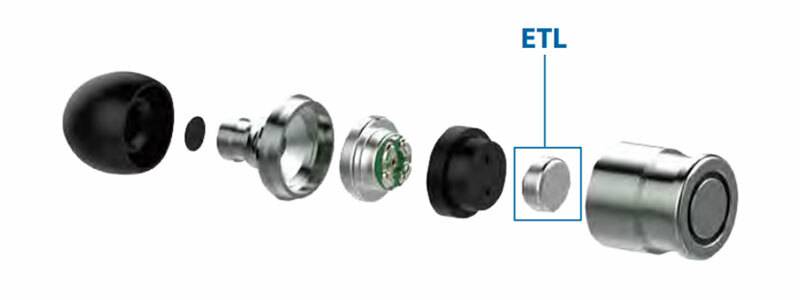THE HDSS AUDIO TECHNOLOGY
HDSS® Pioneers A New Age in Sound Reproduction
HDSS® technology affects the audio reproduction world in two distinct ways:
Unlimited size utilization: The size and shape of the speaker box does not determine sound quality. The beauty of ETL modules is that they can be developed to fit any product. This allows small and creatively shaped audio products to produce a big and natural sound quality.
Cost efficiency: ETL module material and production costs are minimal, which allows audio manufacturers to add the technology to their products for pennies, and in some cases at no additional costs, considering likely savings in product material costs.
Given the superior quality of audio, HDSS technology will become a demand, if not a necessity, for any customer in the market for smartphones, earphones, automobile audio systems, televisions, loudspeakers, home theater audio systems, AI speakers, or public address systems.
THE HDSS BREAKTHROUGH
The ETL device solves the dilemma by acting as a cold reservoir in which heat is drawn from the enclosed air thereby maintaining the pressure constant in the enclosure. The result: Crystal clear, detailed three-dimensional sound.

ETL application:
Driver: Any kind of driver ( dynamic driver, BA driver, flat speaker,…etc) can be applied with ETL.
Sound products: Any kind of sound products can be applied with ETL

ETL Photos:



Active Measuring
World 1st psychological test reportSetting a New Standard
in High Definition Sound
From audiophiles to audiologists to audio engineers enthusiasm for this new technology is amazing listeners and perplexing competitors. How can a pair of small speakers produce crystal clear, distortion free sound? How can the same music sound so much richer and more natural with this sound system? How can speakers make you feel you're in a concert hall, hearing a singer's every subtle nuance and each instrument playing in harmony?
The Struggle
of Convention
Traditional audio technologies utilize various materials and electronic parts in attempting to solve the heat dilemma inherent in sound reproduction. The loudspeaker cone is constantly in motion leaving no time to remove the increasing heat which causes sound distortion. The graphical depiction above conveys an isochoric thermodynamic process showing the build up of pressure caused by increasing heat. Conventional sound systems are hampered by this situation which produces undesirable distorted sounds.